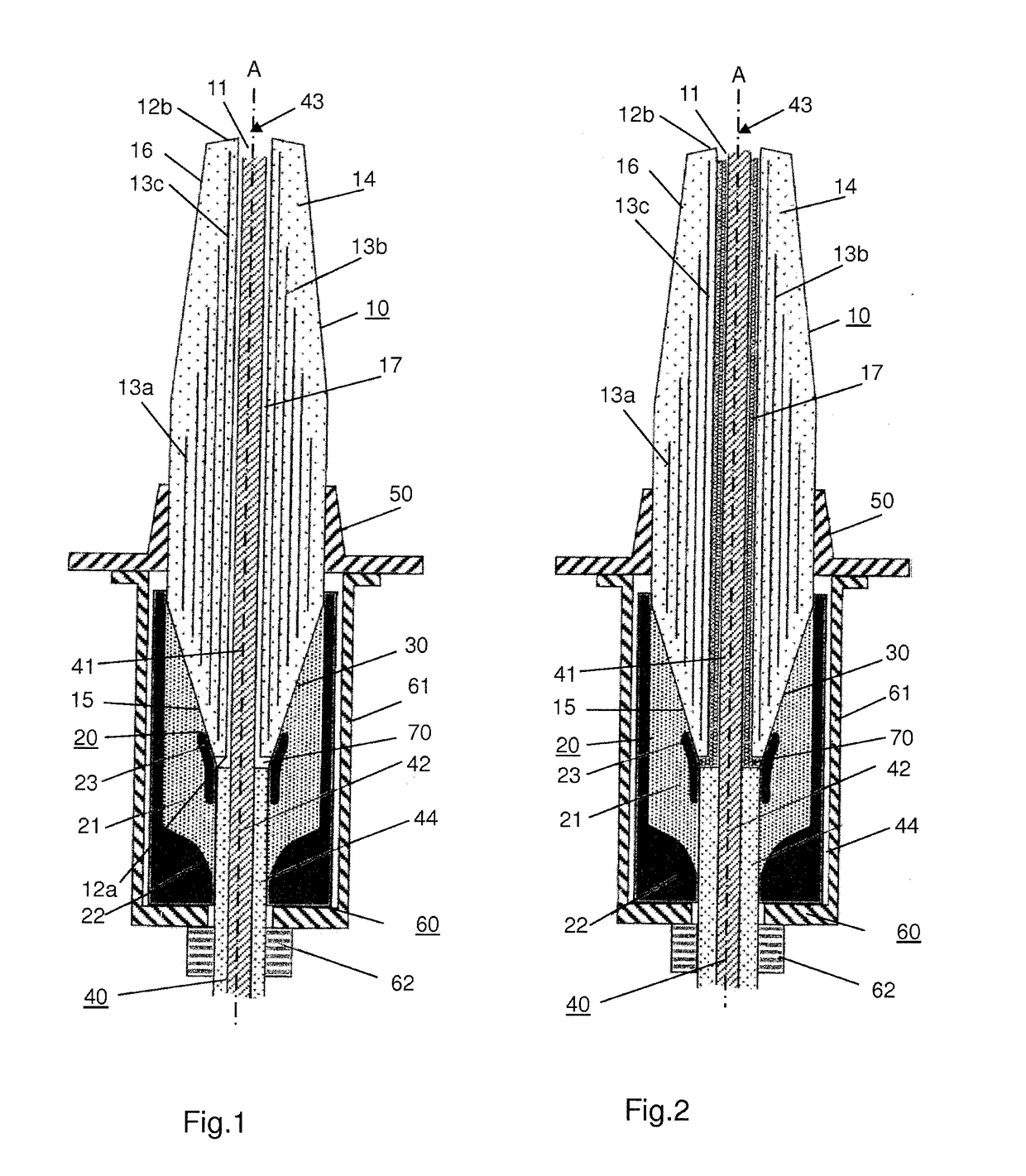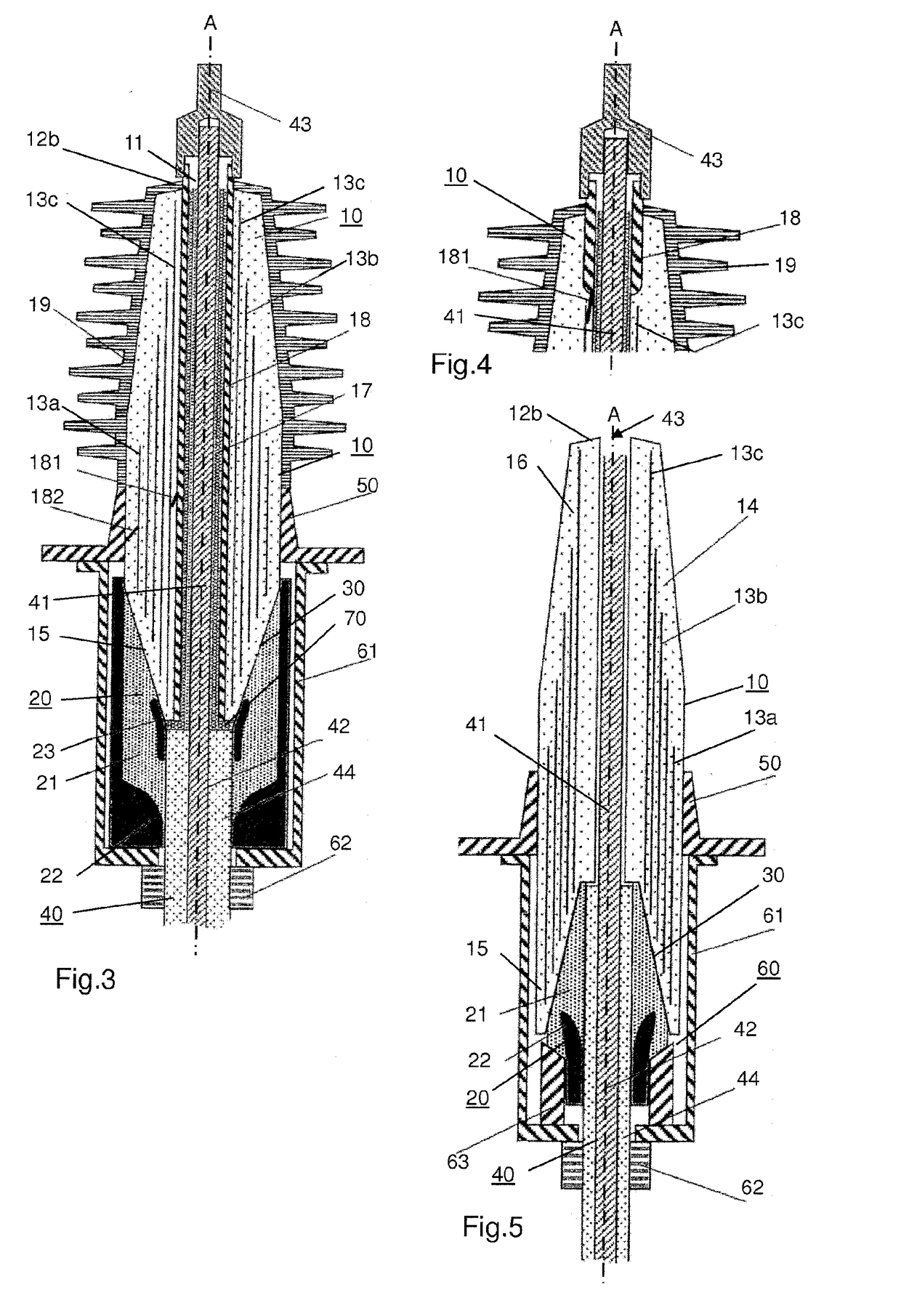Cable fitting for connecting a high-voltage cable to a high-voltage component
a high-voltage component and cable fitting technology, which is applied in the direction of cable terminations, insulated conductors, cables, etc., can solve the problems of limiting the maximum electric current rating of the known cable end termination, affecting and affecting the safety of the environment, so as to facilitate the mounting of the high-voltage current terminal and the effect of dissipation of hea
- Summary
- Abstract
- Description
- Claims
- Application Information
AI Technical Summary
Benefits of technology
Problems solved by technology
Method used
Image
Examples
Embodiment Construction
[0014]It is an object of the invention as described in the patent claims to specify a cable fitting of the afore-mentioned type which is small-sized and which at the time is capable to carry high-rated continuous currents.
[0015]The invention supplies a cable fitting for connecting a high-voltage cable having a cable conductor and a cable insulation, which encases the cable conductor, to a high-voltage component. The cable fitting comprises coaxially arranged around an axis a rigid conical insulator, an electrically insulating, elastomeric stress-relief cone matching the rigid conical insulator through a conical interface and an axially aligned current path which connects the cable conductor to a high-voltage current terminal arranged on top of the rigid conical insulator and provided for connection to the high-voltage component. The rigid conical insulator is configured as a condenser core and comprises a plurality of electrically conductive field-grading layers which are arranged c...
PUM
| Property | Measurement | Unit |
|---|---|---|
| voltage | aaaaa | aaaaa |
| voltage | aaaaa | aaaaa |
| voltage | aaaaa | aaaaa |
Abstract
Description
Claims
Application Information
 Login to View More
Login to View More - R&D
- Intellectual Property
- Life Sciences
- Materials
- Tech Scout
- Unparalleled Data Quality
- Higher Quality Content
- 60% Fewer Hallucinations
Browse by: Latest US Patents, China's latest patents, Technical Efficacy Thesaurus, Application Domain, Technology Topic, Popular Technical Reports.
© 2025 PatSnap. All rights reserved.Legal|Privacy policy|Modern Slavery Act Transparency Statement|Sitemap|About US| Contact US: help@patsnap.com



